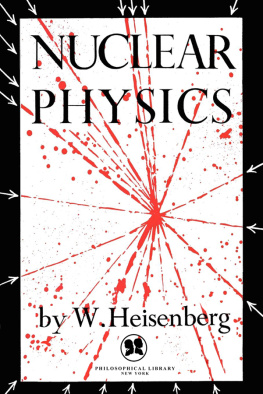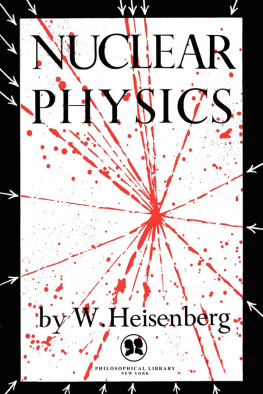The Changing Face of War
From the Editors of Scientific American
Cover Image: Colin Anderson/Getty Images
Letters to the Editor
Scientific American
One New York Plaza
Suite 4500
New York, NY 10004-1562
or editors@sciam.com
Copyright 2017 Scientific American, a division of Nature America, Inc.
Scientific American is a registered trademark of Nature America, Inc.
All rights reserved.
Published by Scientific American
www.scientificamerican.com
ISBN: 978-1-466842571


The Changing Face of War
From the Editors of Scientific American
Table of Contents
Introduction
by Jesse Emspak
Section 1
1.1
by Kyle Wesson and Todd Humphreys
1.2
by Larry Greenemeier
1.3
by John Villasenor
1.4
by John Villasenor
Section 2
2.1
by the Editors
2.2
by P.W. Singer
2.3
by Larry Greenemeier
2.4
by Larry Greenemeier
2.5
by Steven Ashley
2.6
by Mark Alpert
Section 3
3.1
by Charles Q. Choi
3.2
by David M. Nicol
Section 4
4.1
by Fred Guterl
4.2
by Ken Coleman and Raymond A. Zilinskas
Section 5
5.1
by Larry Greenemeier
5.2
by Michael Allswede
Section 6
6.1
by Michael Levi
6.2
by David Biello
6.3
by Daniel G. Dupont
Section 7
7.1
by Theresa Hitchens
7.2
by Steven Ashley
Section 8
8.1
by Alexander Glaser and Frank N. von Hippel
8.2
by Thomas B. Cochran and Matthew G. McKinzie
8.3
by David Biello
8.4
by Rocco Casagrande
The Way of the Warrior
Advances in technology often concur with times of warthe nuclear bomb is perhaps the most iconic example. The then-new knowledge of nuclear physics and the fear that the Nazis mightdevelop a weapon pushed some of the greatest minds in physics and chemistry to solve one ofthe most complex technical problems of the day. Their success ushered in a new age; the rulesof warfare had to change when a reckless act might end human civilization.
In this eBook, The Changing Face of War , we examine the technologies being developed or adaptedfor war and defenseand what these innovations mean for the way nations (and their non-state antagonists) conduct military or security operations. But the technology itself is only half the story. As with the development of nuclear weapons, the resulting fallout of these advances is far more complex and often far more deadly than the preceding methods.
Looking at what a typical infantryman carries in the field, it's sometimes shocking to realize that most of it would have been science fiction to a soldier in 1945. Ray guns have moved from the pages of books and movie screens into real life. We have bombs that can penetrate a hundred feet of earth. Drones attack from the air. Robots like the ones that populate Japanese cartoons and films walk out onto the battlefield. Exoskeletons enhance a soldier's speed, strength and stamina.
Consider drones. Currently they operate under the direction of pilots, but the day will come soon when dronesand robotscan operate independently. If a robot is involved in a war crime, where does the responsibility lie? The United States routinely launches drone attacks on countries it is not formally at war withwhere that falls in the spectrum of acceptable international conduct is an open question. In Section 1, Death from the Sky: Drones, authors Larry Greenemeier and John Villasenor tackle both the technology as well as the questions raised about national security and privacy.
Computer systems and the Internet opened up new areas of vulnerability and conflict, as seen in Section 3, The Cyberwars. As microchips become both more powerful and more ubiquitous, they also have become more vulnerable to attack. Because these chips have few defenses, and yet are networked with other computers, they are an easy point of entry. The Stuxnet worm, for example, put a serious dent in Iran's program to enrich uranium. Whether one believes Iran is developing weapons or not, it was a stark demonstration that cyber-warriors can shut down a factory as surely as a bomb delivered by an air force.
The existence of biological and chemical weapons, to say nothing of the threat of nuclear terrorism by groups unaffiliated with a state, also demands a re-thinking of how and where our systems are vulnerable and exactly how severe any collateral damage would be. In the provocative article Waiting to Explode, Scientific American Executive Editor Fred Guterl analyzes the debate over research restrictions on potentially lethal pathogens.
Sections 6 and 7, Nuclear Weapons and Star Wars: Attack from Orbit, respectively, delve more closely into the consequences of collateral damage. In her article "Space War," Theresa Hitchens outlines the downside of nations taking the high ground in space. Even testing such weapons could create so much space debris as to make Earths orbit unnavigatable. Such wreckage would damage or destroy any spacecraft launched for years. The entire globe would be affected. Collateral damage, indeed.
Such questions aren't new. Poison weaponsand their acceptable usewere described in an Indian manuscript, the Arthashastra , which may date to the 4th century BCE. Centuries later the Hague Convention of 1899 forbade warring states from using expanding "dum-dum" bullets. We have powers to destroy that would have awed the ancient conquerors. With luck, we will keep that power under control.
Jesse Emspak
Book Editor
SECTION 1
Death from the Sky: Drones
Hacking Drones
by Kyle Wesson and Todd Humphreys
On August 2, 2010, a U.S. Navy helicopter wandered lazily into the skiesof the highly restricted airspace that extends like an invisible domeover the American capital. The event might have merited nothingmore than a routine log entry for air-tra c controllers at RonaldReagan Washington National Airport, except for one disturbingdetail. The helicopter had no human pilot. The aircraft had nocutout space for windows, and its cockpit was filled with nothingmore than electronic instrumentation. It was a drone.
The MQ-8B Fire Scout, a 1,429-kilogram, 9.7-meter-long drone,had experienced what investigators later called a softwareissue, whereby its communications link had been severed withhuman operators, who sat helplessly in a ground-control roomat Naval Air Station Patuxent River in Maryland. To make mattersworse, the drone failed to execute software instructionsthat would have forced it to return to its base. The Fire Scout,used for reconnaissance o warships, had wandered into thesame airspace that Air Force One uses when it takes o fromand lands at Andrews Air Force Base.
After 30 minutes of jangled nerves, the operators reestablishedthe communications link and took back control. Afterward,a navy official tried to put a good face on the incident by praisingthe drones performance during its unexpected detourthe autopilotsystem kept the aircraft flying straight and level, for instance.




















